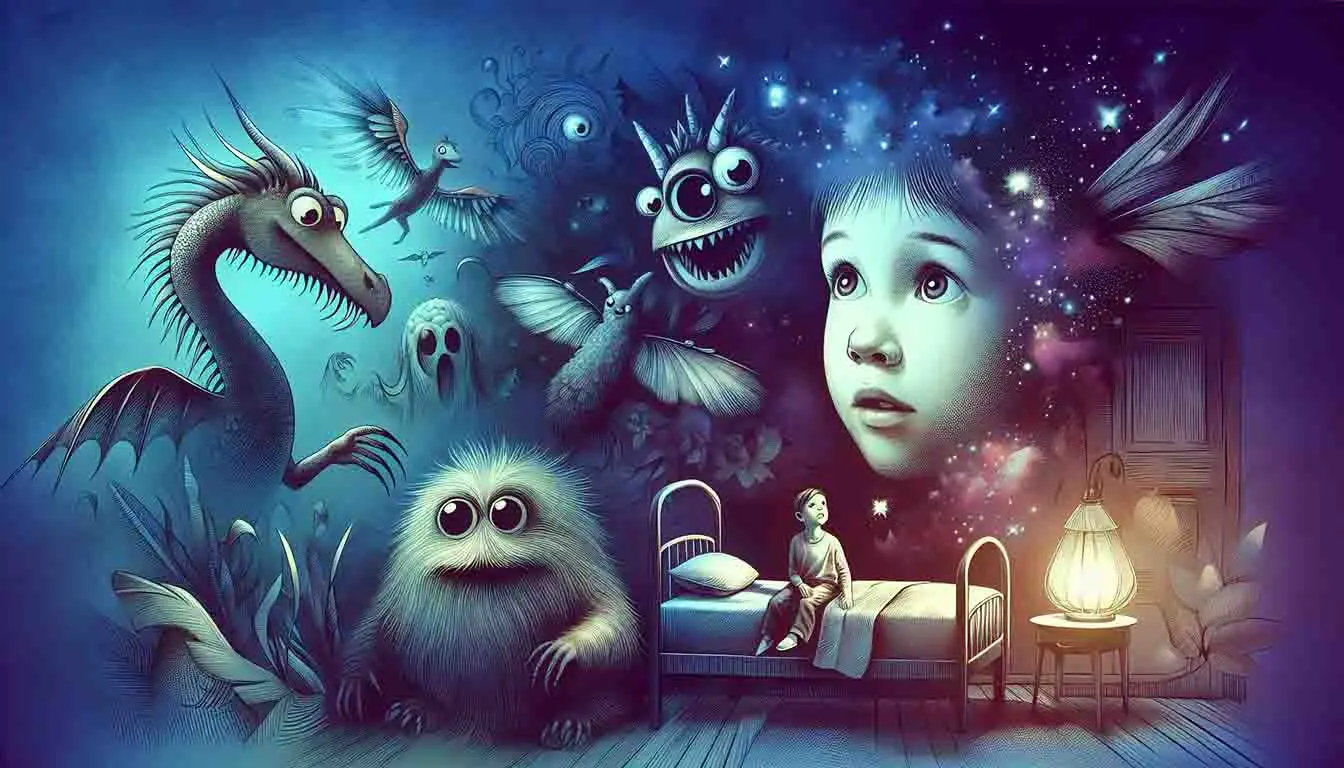If your child trembles at the thought of monsters lurking in the shadows, or if you’re still haunted by remnants of those childhood fears, how do you confront such an invisible enemy? This article explores the roots of being afraid of monsters and offers targeted advice for calming these nighttime terrors. Expect to uncover strategies that not only dispel the myths behind these fears but also build lasting resilience against them.
Key Takeaways
- Understanding a child’s monster fears involves recognizing the role of imagination, cultural/media influences, and natural development of fear.
- Parents can help their children feel safe through comforting bedtime routines, playful ‘monster checks,’ and empowering playtime activities that address fears.
- When childhood fears of monsters become overwhelming, it’s essential to look for signs of excessive anxiety and consider professional support options, while also reinforcing positive coping mechanisms.
Understanding Childhood Monster Fears
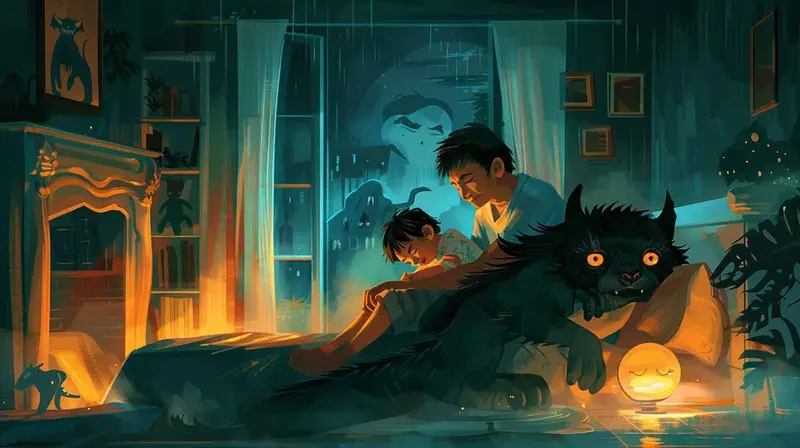
A bump in the night, a shadowy corner, or a strange sound can all transform into monstrous entities in a child’s mind. The fear of monsters is a staple of childhood, one that many adults remember experiencing themselves. Understanding the origins of these fears is the first step in helping kids overcome them.
The interplay of a vivid imagination, cultural and media influences, and the natural development of fear all contribute to the creation of these fantastical beings, or imaginary creatures, that lurk in our children’s imaginations, as well as other imaginary creatures that may arise from similar influences.
The Role of Imagination in Fear
The power of a child’s imagination is boundless. It turns stuffed animals, like a teddy bear, into loyal companions and blankets into impenetrable shields. However, this same creativity can turn innocuous bedroom shadows into terrifying monsters.
At night, when the lights dim, a child’s fears can intensify, making them fear imaginary dangers that feel all too real. It’s crucial for parents to embrace their child’s imagination while teaching them to discern between make-believe and reality, ensuring that their fears don’t become debilitating.
Cultural and Media Influences
From fairy tales to horror movies, our culture is steeped in scary stories of monsters and otherworldly creatures. These narratives, including the occasional scary story, shape children’s understanding of what’s scary and can leave a lasting impact on their young minds.
Even older kids, who might dip their toes into scary movies and horror movies, can find themselves haunted by the vivid images of vampires or ghosts long after the credits roll.
Developmental Stages and Fear
As children grow, their fears often evolve. The terror of monsters under the bed usually fades with time as kids gain a better grasp of reality. Factors like a child’s temperament and the level of parental support they receive play a role in how quickly they outgrow these child’s fears. However, if not addressed, childhood fears can sometimes morph into more significant anxieties or common fears in later life.
Teenagers, with their better understanding of dreams and the world around them, can learn to rationalize and manage the remnants of childhood fears and irrational fears.
Strategies to Help Your Child Feel Safe
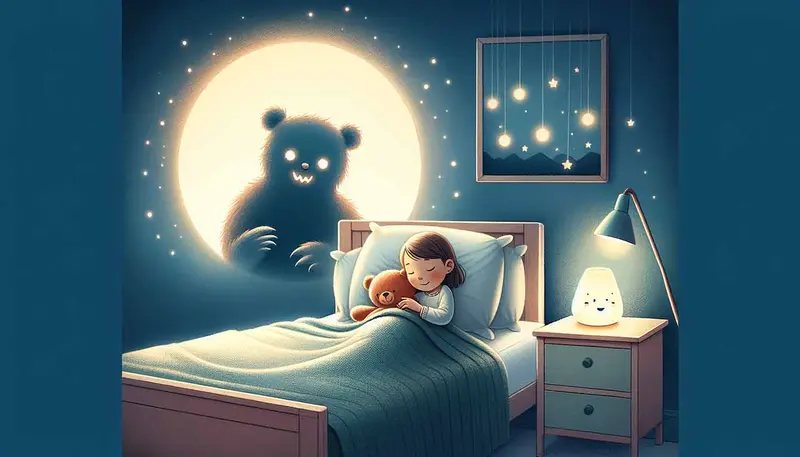
As the night approaches and the lights go out, a child’s bedroom can become a stage for fears to play out. It’s up to us, as parents, to transform that space into a sanctuary where fears are acknowledged and safety is paramount.
By providing reassurance, creating comforting routines, and empowering our children through play, we can encourage children and help them build a fortress against the night’s uncertainties.
Creating Comforting Bedtime Rituals
The power of a bedtime ritual cannot be overstated. A routine that includes winding down activities, such as a warm bath and storytime, sets the stage for a peaceful night. Avoiding stimulating activities before bed, like screen time or boisterous play, can prevent nightmares and help ease the transition into sleep, especially for those who have trouble sleeping.
When children are involved in crafting their bedtime rituals, they feel a sense of control and comfort that can dispel nighttime fears.
The Power of 'Monster Checks'
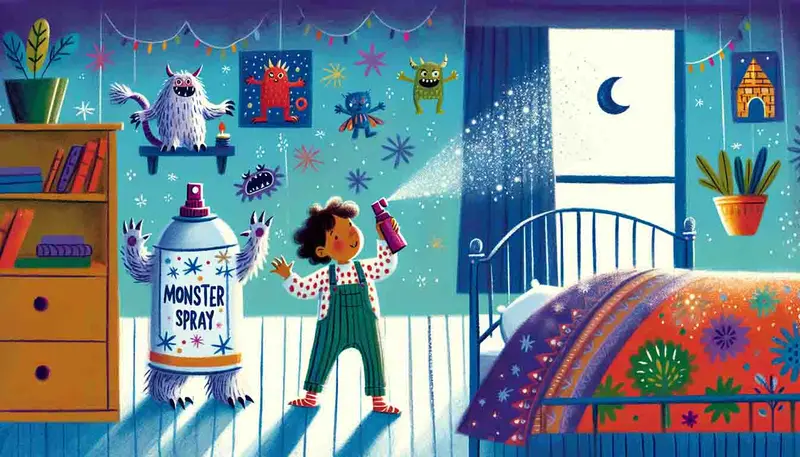
Sometimes, all it takes to banish fears is a thorough ‘monster check’ by a trusted parent. This simple act can reassure a child that they’re safe in their environment.
Adding a sprinkle of playfulness with a homemade ‘monster spray’ can empower even the youngest of preschoolers to take part in the ritual and face their fears head-on.
Empowering Kids Through Play
Play is the language of children, and it’s through this medium that they can confront and process their fears. Dramatic play allows kids to act out scenarios where they have control over the monsters that might otherwise control them. A beloved stuffed animal can become a guardian at night, providing a sense of security and empowerment.
For older children, creative play and discussions can be a subtle way to address real-life concerns, including those that manifest as fears of monsters.
Addressing the Fear Head-On
When the usual comforts and reassurances aren’t enough, it’s time to face the fear of monsters directly. Teaching values, building confidence, and demonstrating that fears can be managed is key to empowering children to confront their monsters head-on.
Talking About Monsters and Reality
Open conversations about monsters and the real world help children understand the difference between the two. Instead of invalidating their fears with laughter or dismissal, engage with your child and support their brave inquiries about the existence of monsters. Direct confrontation, such as unmasking the person behind a costume, can provide tangible evidence that what they fear is not real,.
Asking children what makes them feel brave and supporting those actions can also help them regain control over their fears.
Using Art to Express and Manage Fear
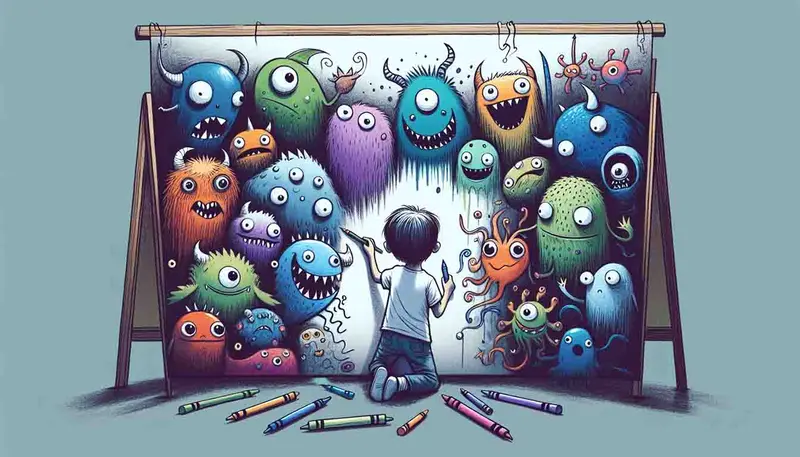
Art provides a canvas for children to project and process their fears. Drawing and storytelling enable kids to articulate their anxieties about monsters in a manageable, therapeutic way. Parents can gain insights into their child’s fears through their drawings, which can reveal underlying triggers influenced by their environment or media exposure.
Dramatic play with toys also offers preschoolers an opportunity to embody and confront their fears, giving them an active role in managing their perceptions of monsters.
Gradual Exposure to Darkness
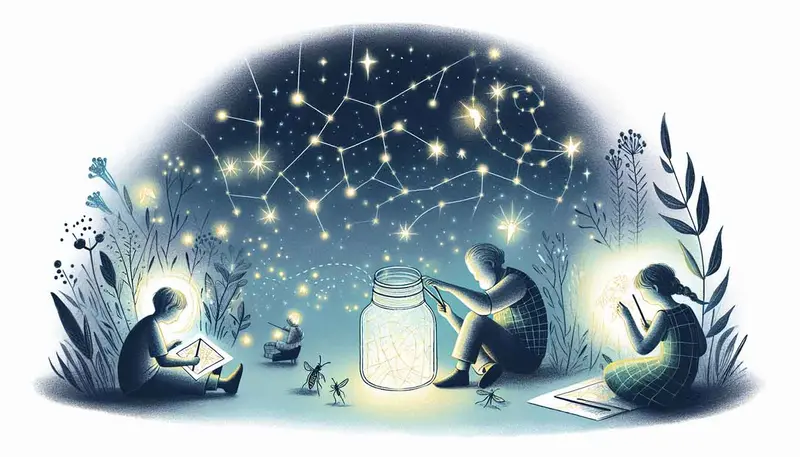
Darkness can be a significant source of fear for many children, but gradually exposing them to it can reduce their anxiety. A night light can provide a comforting glow, while games played in low-light conditions can make darkness less intimidating,.
Books that address overcoming fears can also be helpful tools in teaching children that the dark is nothing to be afraid of.
When Fears Become Overwhelming
It’s natural for children to feel scared at times, but when their fears start to interfere with their daily lives, it’s a signal that additional support might be needed. Persistent nightmares, avoidance of fear-related conversations, and physical symptoms like headaches could indicate that a child’s fear of monsters has become overwhelming.
Identifying Signs of Excessive Anxiety
As parents, we need to be attuned to the signs of excessive anxiety in our children. Intense phobia-related anxiety can manifest in ways that go beyond a simple fear of monsters, potentially requiring medical intervention to alleviate symptoms.
Signs to watch for include persistent fears that lead to social isolation and ridicule from peers, which can have a profound impact on a child’s social development.
Professional Support Options
In cases of severe phobias, cognitive behavioral therapy or exposure therapy administered by experienced professionals like Jen Burke could be necessary,. Such treatments can help children develop the tools they need to manage their fears effectively, providing relief and a path forward for both the child and the family.
Reinforcing Positive Coping Mechanisms

It’s not enough to simply address fears; reinforcing positive coping mechanisms is essential for long-term resilience. Building these skills in children equips them to face life’s challenges with confidence and strength, ready to adapt to adversity and stress.
Encouraging Resilience and Bravery
Acknowledging and praising bravery, even in small steps, can go a long way in building a child’s confidence. Specific praise that focuses on the effort and courage shown by the child reinforces the message that they are capable of overcoming their fears.
Reward systems, such as sticker charts or special privileges for brave actions, can motivate children to manage their fears independently.
Setting Limits on Scary Content
In an age where media is omnipresent, it’s important to be vigilant about the content our children consume. Limiting exposure to horror films and scary content, especially before bedtime, can prevent fears from taking root.
Discussing online safety and setting clear boundaries on what content is off-limits can protect children from stumbling upon frightening material. Designating appropriate times for age-appropriate ‘scary’ content can allow children to explore their interests in a controlled, safe environment.
Tailoring Approaches to Different Age Groups
Children’s fears, like children themselves, are not one-size-fits-all. They change and evolve as kids grow, which means the strategies we use to help them should be tailored to their specific developmental stage and child’s feelings.
Preschoolers: Imaginary Friends and Foes
For preschoolers, the line between imagination and reality is often blurry, leading to fears of monsters and other imaginary dangers. Simple changes in their environment, like a loud noise or a dark room, can become sources of anxiety. Engaging in creative activities like drawing monsters can help preschoolers express and manage their fears.
Empathetic listening and providing physical comfort are key to supporting these young minds as they learn to navigate their fears.
School-Aged Children: Rational Thinking and Peer Influence
By the age of 7, most children can differentiate between what’s real and what’s not, but that doesn’t mean their fears are any less real to them. Fears at this stage can be based on more realistic concerns, like natural disasters or personal safety, and may require a more rational approach to address. Discussing the science behind dreams and debunking myths can help demystify fears for school-aged children.
Open communication and teaching coping strategies, such as deep breathing, can support children in managing their anxieties.
Middle School and Beyond: Social Dynamics and Personal Identity
For teenagers, the fear of monsters may not be as pronounced, but the social implications of those fears can be significant. A lingering fear of the dark can lead to isolation and ridicule from peers, affecting a teen’s social life and sense of self.
Social pressures, like the expectation to participate in activities that involve scary content, can exacerbate these fears and challenge a teenager’s ability to cope.
Summary
Throughout this journey, we’ve explored the shadowy corners of childhood fears, casting light on the monsters that lurk there. We’ve equipped ourselves with an arsenal of strategies, from bedtime rituals to professional therapy, to help our children conquer their fears. Remember, the bravery to face and overcome fear is not the absence of fear itself but the triumph over it. May this guide be your ally in nurturing a brave and resilient generation.
Frequently Asked Questions
What are some signs that my child's fear of monsters is becoming a serious problem?
If your child is having persistent nightmares, avoids talking about their fears, or shows physical symptoms like headaches or stomach aches, it may indicate that their fear of monsters has become overwhelming and professional guidance could be helpful.
Can 'monster checks' actually help my child feel safer?
Yes, "monster checks" can help your child feel safer by providing reassurance and a sense of empowerment in managing their fears, especially when accompanied by a playful element like "monster spray."
How can I help my preschooler manage their fear of the dark?
Help your preschooler manage their fear of the dark by involving them in calming bedtime routines, providing a night light, engaging in creative activities like drawing, and offering empathy and physical comfort to support their emotional needs.
Is it normal for school-aged children to still have fears?
Yes, it's normal for school-aged children to still have fears. Older kids may understand reality, but their fears can still be intense and based on realistic concerns. Educating them and offering rational explanations can help ease their anxieties.
At what point should I consider professional help for my child's fears?
If your child's fear is significantly affecting their daily activities, such as social interactions, school performance, or sleep, it may be time to consider professional help, such as cognitive behavioral therapy or exposure therapy, to address intense phobias.
References and Further Reading
- Gradual Exposure to Darkness - Techniques for helping children become more comfortable with the dark.
- Encouraging Bravery in Kids - Tips for nurturing bravery and confidence in children.
- Cognitive Behavioral Therapy for Children - An overview of how CBT can help children manage their fears.
- Art Therapy for Children - How art therapy can be used to help children express and manage their fears.
- Gradual Exposure to Darkness - Techniques for helping children become more comfortable with the dark.
- Encouraging Bravery in Kids - Tips for nurturing bravery and confidence in children.
These resources provide valuable insights and actionable strategies for parents aiming to help their children conquer their fears and build resilience.
